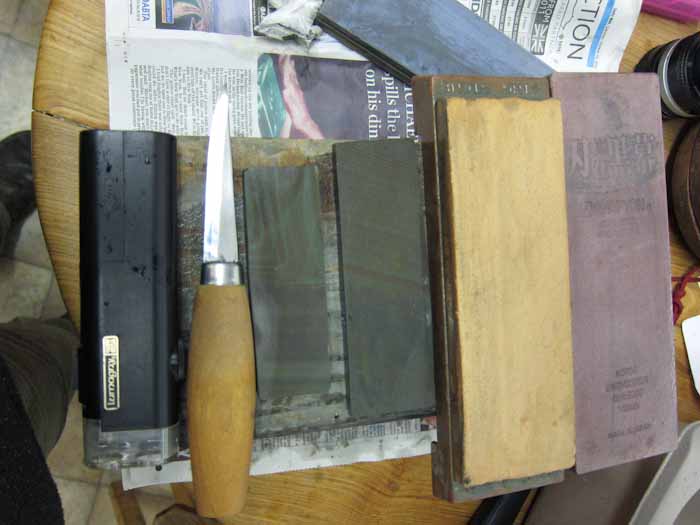Whittler Kev
Bushcrafter (boy, I've got a lot to say!)
 Like the blue dress - no wonder your hiding in the shed
Like the blue dress - no wonder your hiding in the shed 

You seem to have got a lot of the dust in your beard and on your hair


Stones arrived today
 . Cheers dude.:You_Rock_
. Cheers dude.:You_Rock_ Like the blue dress - no wonder your hiding in the shed
Like the blue dress - no wonder your hiding in the shed 



 . Cheers dude.:You_Rock_
. Cheers dude.:You_Rock_Only just came across this thread and very nice it is too. Love how those stones look, the whole spirit of going prospecting for them and everything, hats off to you. Like the wine too, why rough it?
Has anyone worked with one of these stones who has good experience of other stones to compare them to? What sort of grit are they working out and how fast are they cutting? are folk using them with water or oil? I would love to try one.
They are great stones, I have three and they're all very consistent as far as grit goes, they leave an extremely polished edge, to compare it to a Japanese water stone I'd say around 6,000 possibly below or above, I've ran some sharpish blades over the stones and been left with hair splitting edges, an interesting observation that I've noticed it that if you sharpen a knife on the one of the stones and don't strop it it won't be extremely sharp but then when you do stop it the blade becomes razor sharp.
I lubricate my stones with water.
One off topic question though:could someone please tell me about the stone walls?I would assume they've been built as property boundaries and also serve to contain livestock?Forgive my ignorance as I'm sure I'm asking a question that even the youngest child knows the answer to.
You presume right. Most of these dry stone walls date from the enclosure acts of the 18th and 19th centuries. Before that the land was open with multiple shared grazing rights. The enclosure acts did away with communal and multiple ownership split the land up and the new owners put the walls up or planted hedges. It was very controversial at the time. Not all walls or hedges are of that date some are much older, with local knowledge it is possible to tell which. Enclosure act walls and hedges tend to be relatively straight or regular smooth lines as if following a line drawn on a map whereas older ones tend to be more higgledy piggledy following the lie of the land more. The areas of previously open fields/enclosure acts roughly correlates to the areas of Saxon and Viking settlement. So in areas I know say Essex north of the A120 the hedgerows are all 18th and 19th c to the south they are generally 1000 years old.

Yorkshire
Moughton Whetstone Hole, Crummackdale.
The Moughton Whetstone is a concentrically banded, (red/purple and green), mudstone that was quarried to make whetstones for the Sheffield razor industry. The Whetstone Hole is a spring where the same type of stone is found. In the literature, the area of origin for this stone is given as either Crummackdale or Ribblesdale, but the area in which stones were quarried for commercial use seems unclear.
Just been reading as I'm pretty sure I've seen some stone like that near Ribblesdale a year or so ago anyway it seems that its a mudstone from this ...
That's from THIS page that I found with the aid of Google.
